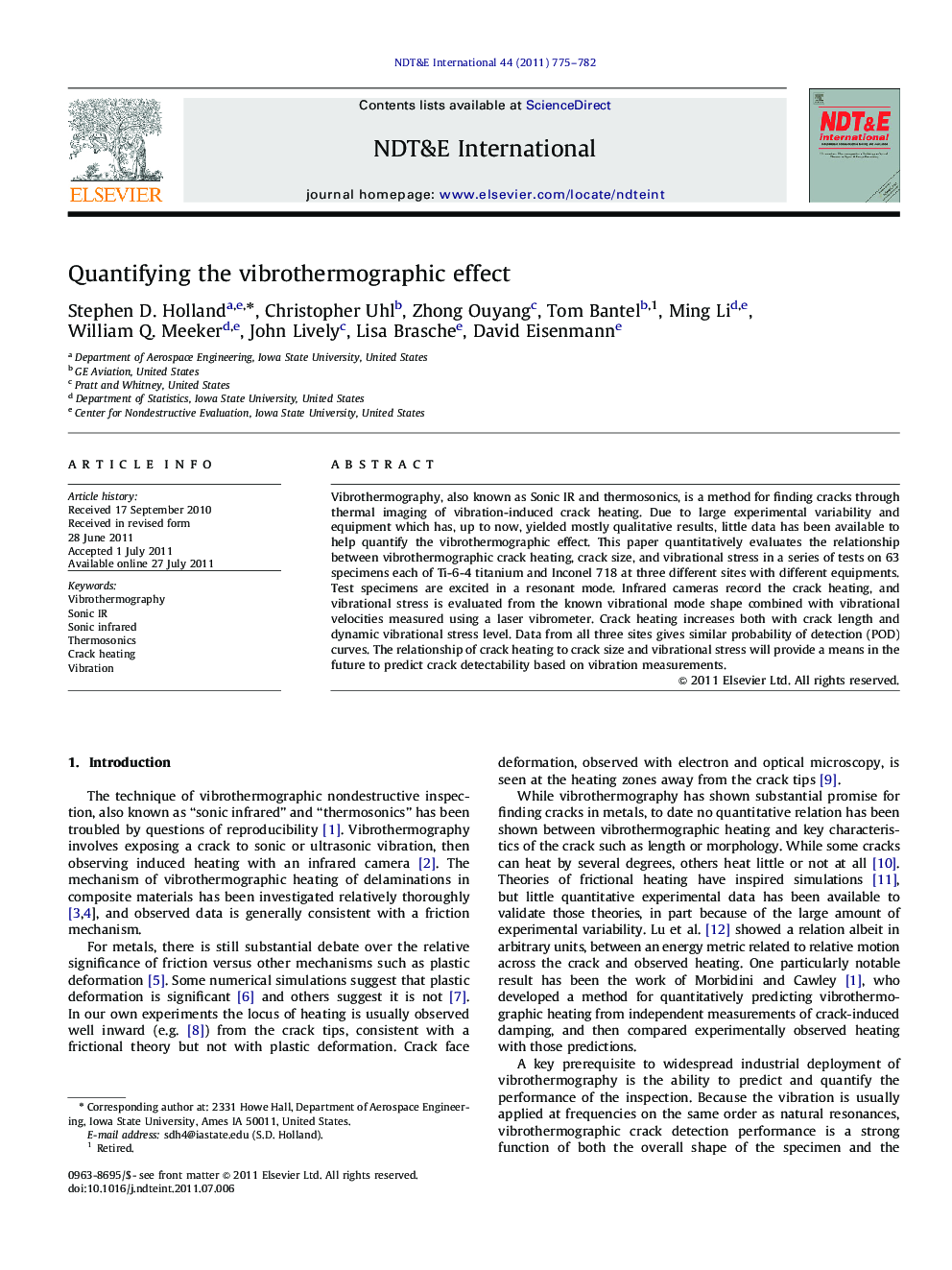| Article ID | Journal | Published Year | Pages | File Type |
|---|---|---|---|---|
| 295381 | NDT & E International | 2011 | 8 Pages |
Vibrothermography, also known as Sonic IR and thermosonics, is a method for finding cracks through thermal imaging of vibration-induced crack heating. Due to large experimental variability and equipment which has, up to now, yielded mostly qualitative results, little data has been available to help quantify the vibrothermographic effect. This paper quantitatively evaluates the relationship between vibrothermographic crack heating, crack size, and vibrational stress in a series of tests on 63 specimens each of Ti-6-4 titanium and Inconel 718 at three different sites with different equipments. Test specimens are excited in a resonant mode. Infrared cameras record the crack heating, and vibrational stress is evaluated from the known vibrational mode shape combined with vibrational velocities measured using a laser vibrometer. Crack heating increases both with crack length and dynamic vibrational stress level. Data from all three sites gives similar probability of detection (POD) curves. The relationship of crack heating to crack size and vibrational stress will provide a means in the future to predict crack detectability based on vibration measurements.
► Vibrothermography is also known as sonic infrared and thermosonics. ► Cracks are found through heat generated from vibration-induced frictional rubbing. ► Quantitative evaluation of crack heating as a function of vibrational stress level. ► Data from 63 specimens each of Ti-6-4 titanium and Inconel 718. ► Probability of detection curves are shown.
